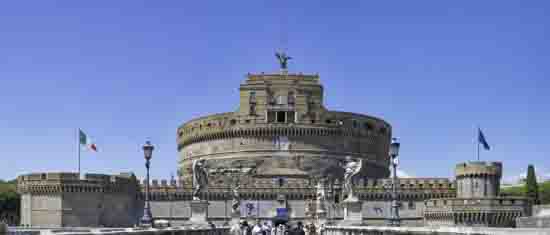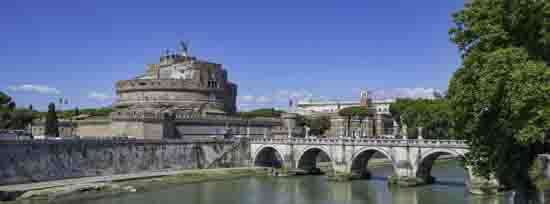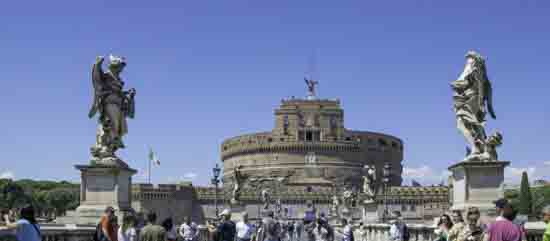Castel Sant'Angelo
| Castel Sant'Angelo, originally built as the Mausoleum of Hadrian, is a prominent monument in Rome, Italy. Constructed between 134 and 139 AD, it initially served as a tomb for Emperor Hadrian and his family. Over the centuries, it transformed from a mausoleum to a fortress, a castle, and a papal residence. The structure played a crucial role in Rome's history, serving as a refuge for popes during times of danger, connected to the Vatican by a fortified corridor. It was used as a prison and place of execution during the Middle Ages and Renaissance. |
Castel Sant'Angelo, 41°54'05.7"N 12°27'59.3"E
Castel Sant'Angelo, 41°54'04.8"N 12°28'01.7"E
Castel Sant'Angelo & Ponte Sant'Angelo, 41°54'03.9"N 12°27'52.7"E
| The Ponte Sant'Angelo, originally built by Emperor Hadrian in 134 AD, is a Roman bridge connecting the city to the Castel Sant'Angelo, which was initially Hadrian’s mausoleum. It features ten statues of angels along the parapets, added in the 17th century by Bernini and his students. The bridge has been a key passageway for pilgrims traveling to St. Peter’s Basilica, reinforcing its significance in linking Rome's historical and religious landmarks. |
Ponte Sant'Angelo and the Angels, 41°54'04.7"N 12°27'59.4"E
| Ponte Sant'Angelo bridge is adorned with magnificent angel statues sculpted by Bernini and his students. The statues, each holding symbols of the Passion of Christ, line the bridge leading to Castel Sant'Angelo in the background. This picturesque scene reflects the harmonious blend of art, religion, and Roman architecture, making the bridge and its angels an iconic passage to the ancient fortress. |
| |



